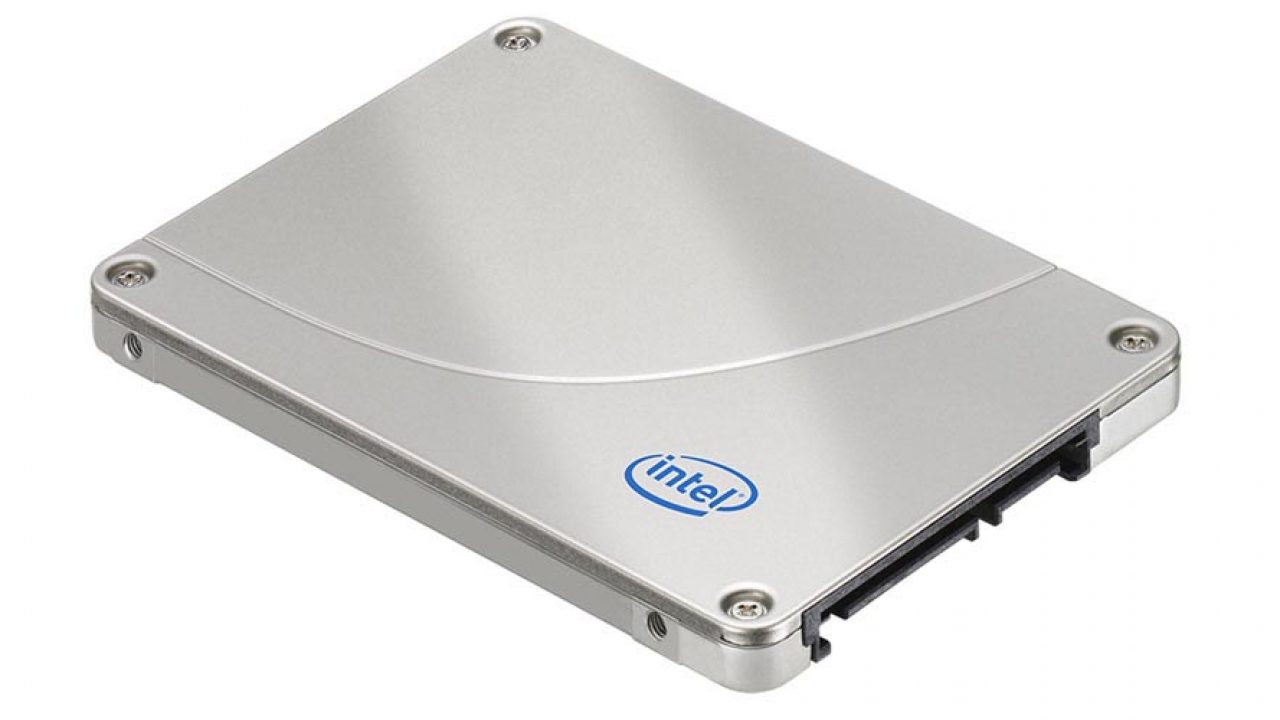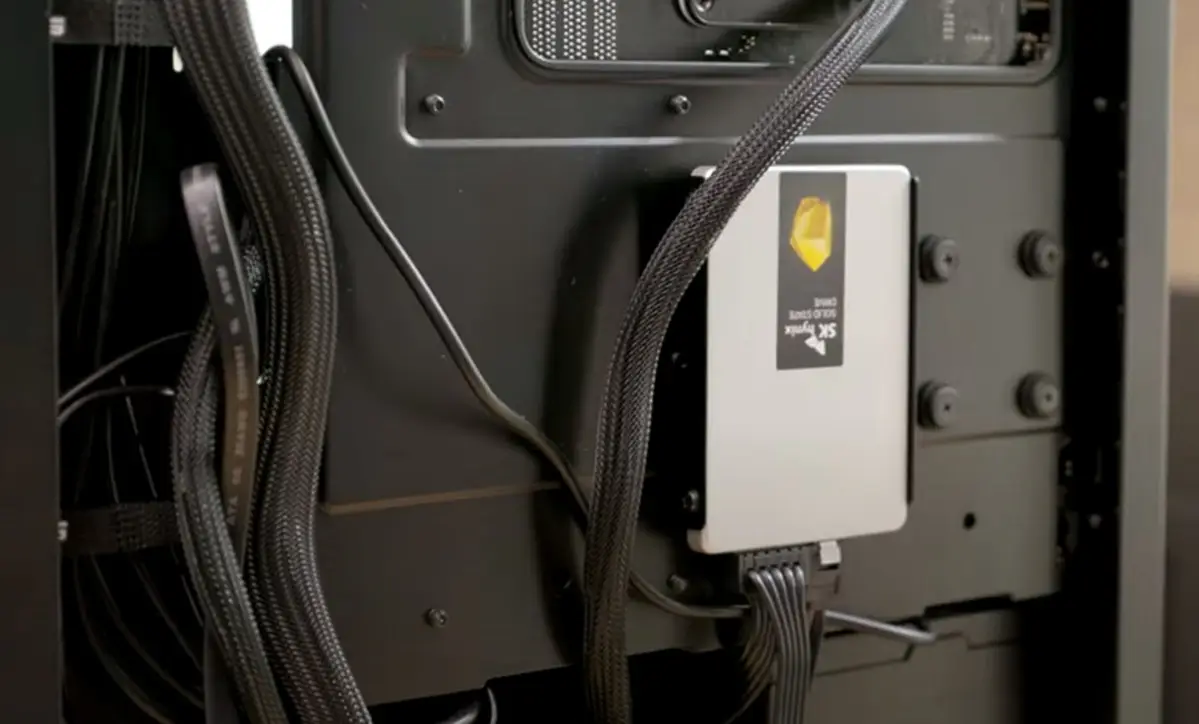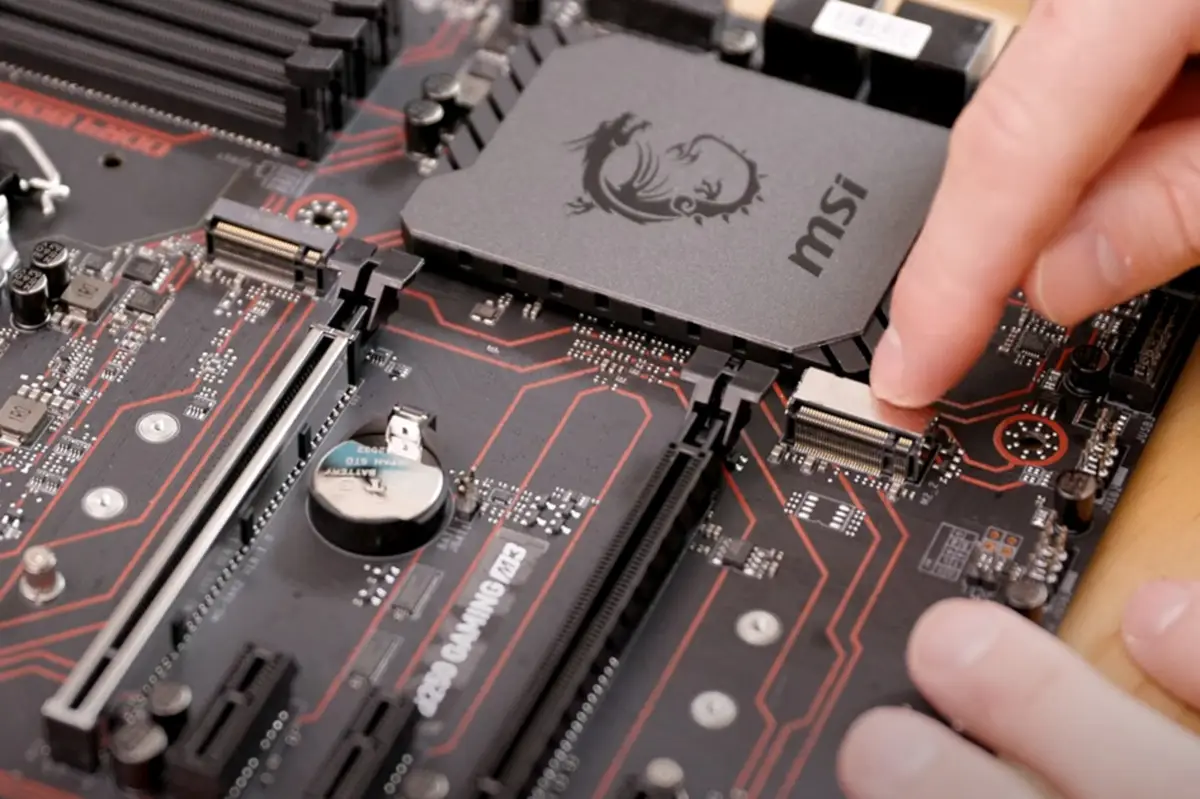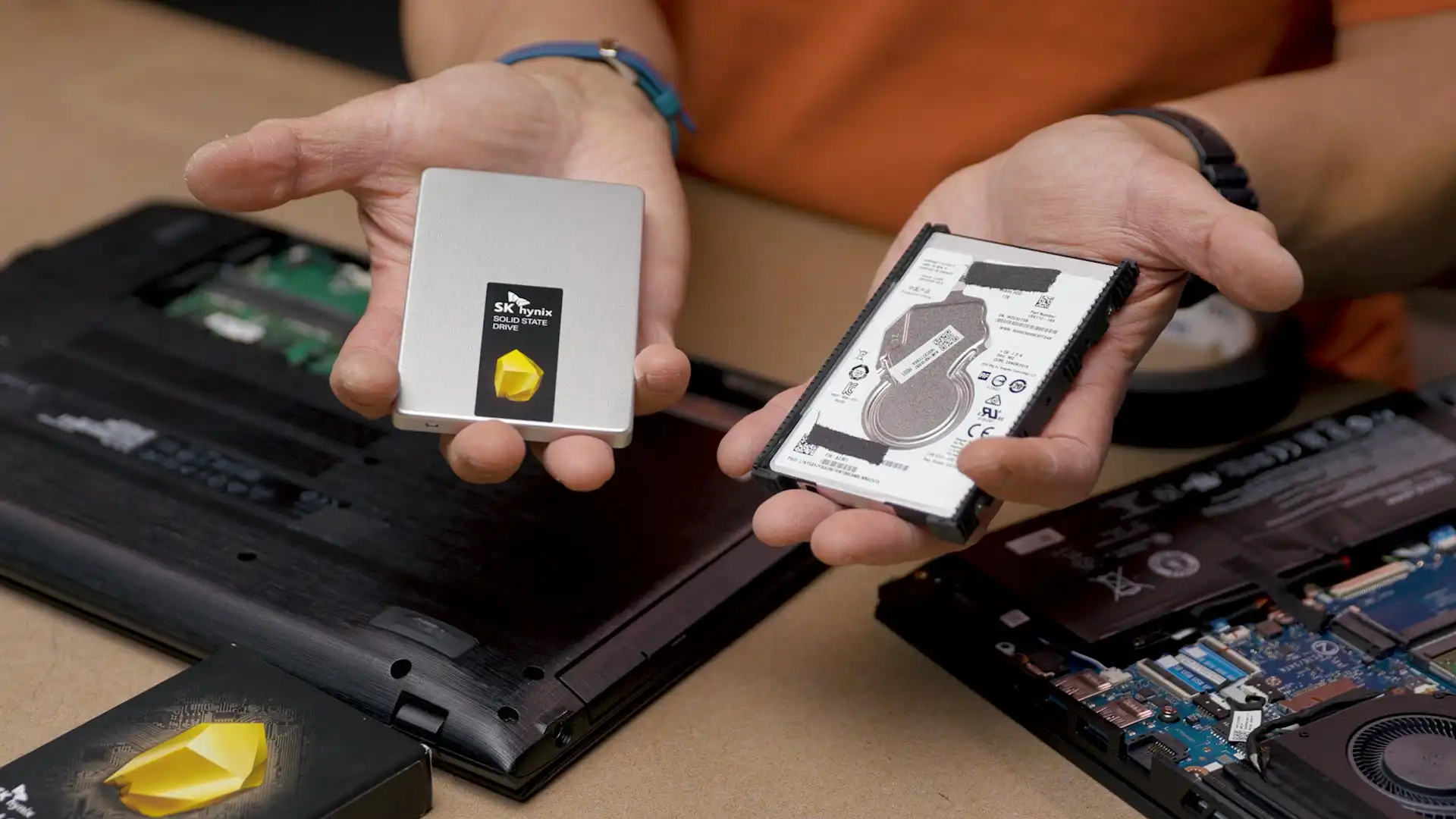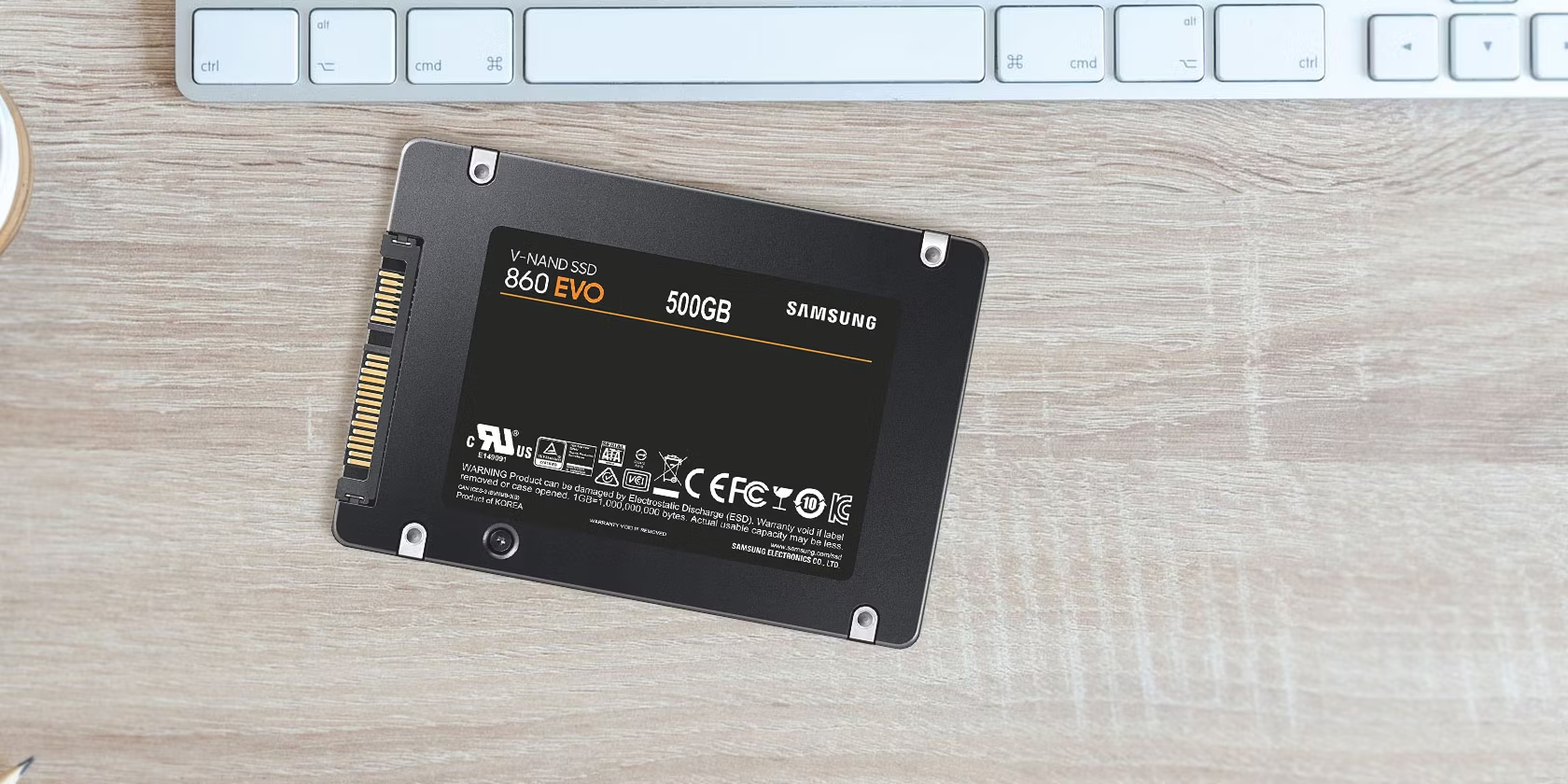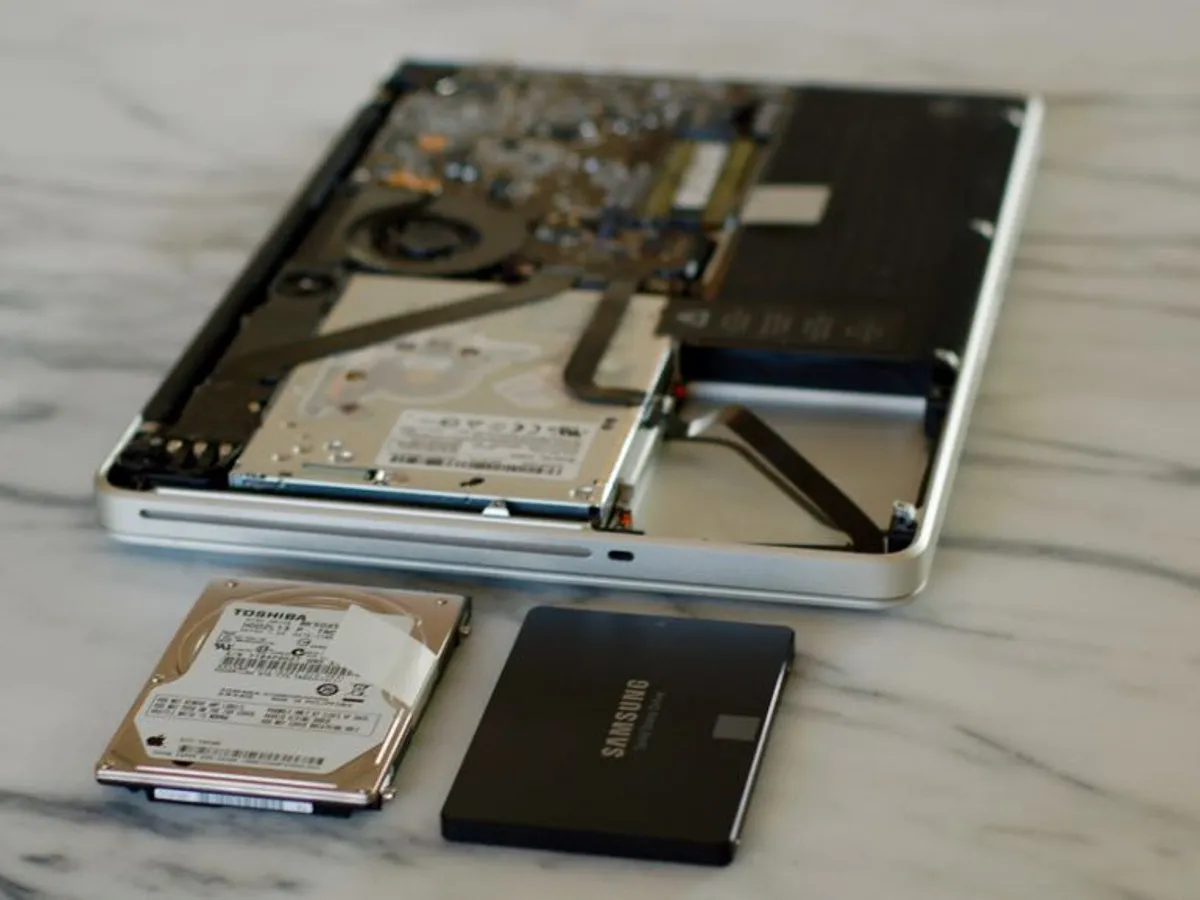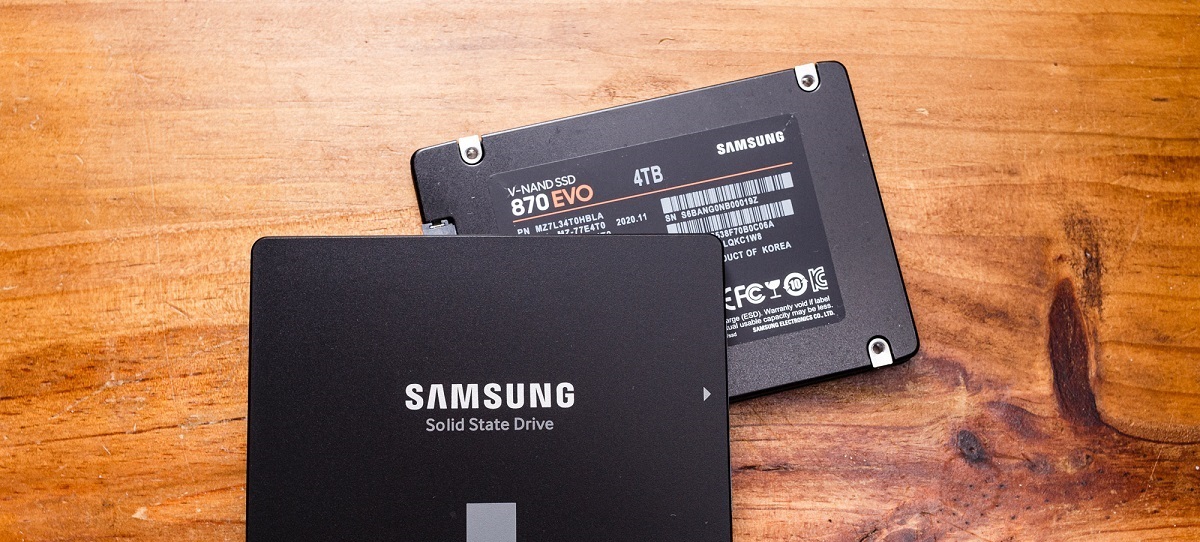Faster Performance
When it comes to overall system performance, a solid-state drive (SSD) is a game-changer. Unlike traditional hard disk drives (HDDs) that rely on spinning disks and mechanical read/write heads, SSDs utilize flash-based memory, resulting in significantly faster data access and transfer speeds.
One of the main reasons why SSDs offer faster performance is the absence of moving parts. With no spinning disks or read/write heads to contend with, data can be retrieved and written to an SSD much more quickly. This translates to faster application launches, shorter file load times, and seamless multitasking capabilities.
In addition to faster data access, SSDs also have much faster boot times compared to HDDs. You won’t have to wait minutes for your computer to start up – with an SSD, your system can be up and running in a matter of seconds. Whether you’re in a rush to complete an urgent task or simply want to maximize your productivity, the improved boot times of SSDs can make a noticeable difference in your day-to-day computing experience.
Furthermore, SSDs excel at handling large file transfers with ease. Whether you’re copying a large video file or transferring gigabytes of data, the faster transfer speeds of SSDs can save you valuable time. These drives are designed to handle high data loads efficiently, ensuring that your file transfers are completed swiftly and smoothly.
To sum it up, an SSD is the key to unlocking faster performance in your computer or laptop. With its lightning-fast data access, improved boot times, and speedier file transfers, you can enjoy a more responsive and efficient computing experience. Whether you’re a professional who depends on seamless multi-tasking or a gamer looking to maximize your gaming performance, investing in an SSD is a must.
Improved Boot Times
One of the most frustrating aspects of using a traditional hard disk drive (HDD) is the long wait times for your computer to boot up. However, with a solid-state drive (SSD), you can significantly improve boot times and start using your system in a matter of seconds.
The key factor that enables SSDs to excel in boot times is their lack of moving parts. Unlike HDDs that require time for the spinning disks and read/write heads to initialize, SSDs use flash memory to store and access data. This results in faster access speeds and eliminates the delay associated with mechanical components.
When you power on your computer with an SSD, the system can swiftly retrieve the required data from the flash memory, allowing your operating system to load quickly. Instead of waiting for the spinning disks to reach the necessary speeds, an SSD provides near-instantaneous access to the stored information, leading to a significantly faster boot process.
Whether you’re a professional rushing to meet a deadline or a casual user who wants to get started as quickly as possible, improved boot times can make a noticeable difference in your daily computing experience. With an SSD, you can skip the minutes-long wait and start working or playing without delay.
Besides the time saved, shorter boot times can also have a positive impact on your productivity and overall user experience. You can seamlessly transition from powering on your computer to launching applications, accessing files, and engaging in tasks without any frustrating delays. This improved efficiency allows you to be more productive and achieve your goals faster.
To sum it up, if you’re tired of waiting for your computer to boot up, investing in an SSD is the solution. With its absence of moving parts and near-instantaneous data access, an SSD can significantly improve boot times and enhance your overall computing experience. Say goodbye to the long wait and enjoy the benefits of speedy boot-ups with an SSD.
Faster File Transfers
Waiting for large files to transfer can be a tedious and time-consuming process, especially when using a traditional hard disk drive (HDD). However, by upgrading to a solid-state drive (SSD), you can experience significantly faster file transfer speeds, saving you valuable time and improving your overall productivity.
The speed advantage of SSDs when it comes to file transfers lies in their flash-based memory technology. Unlike HDDs that rely on mechanical read/write heads to access data from spinning disks, SSDs use integrated circuits to quickly retrieve and write data. This results in faster transfer speeds, allowing you to move files between folders, drives, or devices in considerably less time.
Whether you’re working with large video files, high-resolution images, or extensive documents, SSDs ensure that your file transfers are completed swiftly and efficiently. Large files that used to take minutes to transfer can now be moved in a matter of seconds, enabling you to focus on your work or enjoy your media without unnecessary delays.
Furthermore, SSDs excel at handling multiple file transfers simultaneously. Thanks to their high-speed data access and read/write capabilities, you can transfer multiple files concurrently without sacrificing performance. This makes SSDs ideal for tasks that involve working with large amounts of data or when you need to move files between various locations quickly.
In addition to individual file transfers, SSDs also offer faster speeds when it comes to synchronizing and backing up your data. Whether you’re syncing your files to cloud storage or creating regular backups, an SSD can complete these operations more swiftly, ensuring the safety and availability of your important files without significant time investment.
In summary, upgrading to an SSD can dramatically improve file transfer speeds, making it a wise investment for anyone who regularly works with large files, wants to increase productivity, or simply desires a smoother data management experience. With faster transfer speeds and the ability to handle multiple transfers simultaneously, an SSD enhances your workflow, saves you time, and allows you to focus on what matters most.
Enhanced Multitasking Capabilities
In today’s fast-paced digital world, multitasking has become a crucial aspect of daily computer usage. Whether you’re a professional juggling multiple applications and tasks or a casual user who likes to have many tabs open, a solid-state drive (SSD) can greatly enhance your multitasking capabilities.
The key factor that makes SSDs excel in multitasking is their lightning-fast data access speeds. With no mechanical components, SSDs can retrieve and process data at a much higher rate compared to traditional hard disk drives (HDDs). This means that you can seamlessly switch between multiple applications, open and close programs, and perform resource-intensive tasks without experiencing significant lag or slowdowns.
When you have an SSD, you won’t have to worry about your system struggling to keep up with your multitasking demands. You can effortlessly have numerous applications running simultaneously, switch between them with ease, and smoothly transition between different tasks without disruption.
In addition to improved speed, SSDs also provide enhanced responsiveness, allowing you to instantly access and interact with your files and applications. This means that you can open and close programs rapidly, access files and documents without delay, and navigate through your computer’s interface quickly and effortlessly.
Furthermore, SSDs minimize the impact of background tasks on your overall system performance. While HDDs can sometimes struggle with heavy disk activity, SSDs can handle simultaneous read and write operations with ease. This means that you can run background processes, such as antivirus scans or file backups, without them interfering with your active tasks.
With enhanced multitasking capabilities offered by SSDs, you can be more productive and efficient in your daily computing activities. Whether you’re working on complex projects, streaming media, browsing the internet, or engaging in resource-intensive tasks, the speed and responsiveness of an SSD will ensure a smooth and seamless multitasking experience.
To sum it up, upgrading to an SSD can significantly enhance your multitasking capabilities. With faster data access speeds, improved responsiveness, and the ability to handle multiple tasks simultaneously, an SSD allows you to navigate through your computer effortlessly and complete your tasks efficiently without any noticeable slowdowns.
Extended Battery Life for Laptops
For laptop users, battery life is a crucial factor that determines productivity and the ability to work on the go. One significant advantage of using a solid-state drive (SSD) in your laptop is the potential for extended battery life, allowing you to work or play for longer periods without having to recharge.
Compared to traditional hard disk drives (HDDs), SSDs consume less power during operation. This is because SSDs don’t rely on mechanical components to read, write, and access data. Without the need to spin disks or move read/write heads, SSDs require less energy to perform the same tasks as HDDs. As a result, laptops equipped with SSDs draw less power from the battery, leading to increased battery life.
Another aspect that contributes to the extended battery life is the faster data access speeds of SSDs. Since SSDs can quickly retrieve and process data, the laptop’s components, such as the processor and memory, can operate more efficiently. This means that the laptop doesn’t have to work as hard or consume as much power to complete tasks, further extending the battery life.
By upgrading to an SSD, you can experience noticeable improvements in battery life, allowing you to use your laptop for extended periods without needing to connect to a power source. This is especially beneficial for those working remotely, traveling, or attending meetings where access to a power outlet may be limited.
Extended battery life not only enhances your productivity but also provides more flexibility and convenience. You can confidently work on your tasks, stream media, or enjoy entertainment without constantly worrying about running out of battery power. Whether you’re a professional constantly on the go or a student attending classes throughout the day, the extended battery life provided by an SSD allows you to stay connected and productive wherever you are.
In summary, if you’re looking to maximize the battery life of your laptop, upgrading to an SSD is a wise choice. With reduced power consumption and optimized performance, SSDs enable you to use your laptop for longer periods without needing to recharge. Experience the freedom, flexibility, and increased productivity that comes with an extended battery life provided by an SSD.
Greater Durability and Reliability
When it comes to storage devices, durability and reliability are crucial factors to consider. In this regard, solid-state drives (SSDs) offer a significant advantage over traditional hard disk drives (HDDs). SSDs are known for their robust construction and reliable performance, making them a reliable choice for storing and accessing your important data.
One of the main reasons why SSDs are more durable than HDDs is their lack of moving parts. Unlike HDDs that rely on spinning disks and mechanical read/write heads, SSDs use flash memory to store and retrieve data. This absence of mechanical components significantly reduces the risk of mechanical failure due to shocks, drops, or vibrations.
Additionally, since SSDs do not have spinning disks, they are less susceptible to data loss caused by physical damage. HDDs can experience data loss if the read/write heads make contact with the spinning platters. SSDs, on the other hand, are not affected by this issue, reducing the risk of data loss due to physical impact.
Furthermore, SSDs are more resistant to temperature extremes and humidity compared to HDDs. They can withstand a wider range of operating temperatures and are less vulnerable to environmental factors that can affect the performance and reliability of traditional hard drives.
In terms of data integrity, SSDs have built-in error correction mechanisms and advanced wear-leveling algorithms. These features ensure that your data is stored and accessed accurately and efficiently, minimizing the chances of data corruption and preserving the integrity of your files.
With their durable construction and reliable performance, SSDs are ideal for portable devices such as laptops, tablets, and mobile devices. The increased resistance to physical damage and data loss makes SSDs a reliable choice for users who are always on the move and rely on their devices for work or personal use.
Whether you’re a professional handling sensitive data, a student with important academic files, or a casual user with cherished memories stored in digital format, the durability and reliability of an SSD provide peace of mind. You can trust that your data is secure, accessible, and protected from physical damage and unexpected failures.
In summary, SSDs offer greater durability and reliability compared to HDDs. With their solid-state design and absence of moving parts, SSDs are less prone to mechanical failure, data loss, and environmental hazards. Investing in an SSD ensures that your data is protected and accessible, providing you with a reliable storage solution for your important files and documents.
Reduced Noise and Heat Generation
When it comes to the performance and comfort of your computer or laptop, noise and heat generation are two factors that can significantly impact your experience. Upgrading to a solid-state drive (SSD) can help mitigate these issues by reducing noise levels and minimizing heat generation, creating a quieter and cooler computing environment.
Unlike traditional hard disk drives (HDDs) that rely on spinning disks and mechanical read/write heads, SSDs have no moving parts. This absence of mechanical components eliminates the noise caused by the spinning disks and the movements of the read/write heads. As a result, using an SSD can significantly reduce the overall noise levels produced by your system.
The elimination of noise not only contributes to a quieter working environment but also enhances your overall user experience. Whether you’re working in a shared space, attending a virtual meeting, or simply looking for a more peaceful computing experience, the reduced noise levels provided by an SSD can make a noticeable difference.
In addition to reducing noise, SSDs also generate less heat compared to HDDs. The mechanical components in HDDs generate heat due to the friction caused by spinning disks and moving read/write heads. SSDs, on the other hand, rely on flash memory technology that does not produce heat in the same way.
The reduced heat generation of SSDs has multiple benefits. Firstly, it helps to maintain a cooler operating temperature for your computer or laptop. Excessive heat can cause thermal throttling, where the system slows down to prevent overheating, leading to decreased performance. By using an SSD, you can minimize the risk of thermal throttling and ensure your system operates at its full potential.
Furthermore, reduced heat generation contributes to the longevity and reliability of your system. High temperatures can put stress on the components of your computer, potentially leading to decreased performance, increased wear and tear, and even system failures. SSDs, with their lower heat generation, help to mitigate these risks, allowing your system to operate more efficiently and last longer.
By upgrading to an SSD, you can enjoy a quieter and cooler computing experience. The absence of noise and reduced heat generation provided by SSDs create a more comfortable environment, enhance performance, and contribute to the overall longevity and reliability of your system. Whether you’re focusing on work, enjoying multimedia, or engaging in intensive tasks, an SSD can provide a noticeable improvement in your computing experience.
Lower Power Consumption
In an era where energy efficiency is becoming increasingly important, solid-state drives (SSDs) are ahead of the game. When compared to traditional hard disk drives (HDDs), SSDs offer the advantage of lower power consumption, making them a greener and more energy-efficient choice.
The primary reason for the lower power consumption of SSDs is their lack of moving parts. Unlike HDDs that rely on spinning disks and mechanical read/write heads, SSDs utilize flash memory for data storage and retrieval. Flash memory operates on a different principle, using integrated circuits that require significantly less power to function. Without the need for mechanical components to move and spin, SSDs consume less energy in the process.
By using an SSD, you can extend the battery life of your portable devices, such as laptops and tablets. Since SSDs draw less power from the battery, your device can last longer on a single charge, allowing you to work, browse the internet, or enjoy multimedia for extended periods without needing to connect to a power outlet. This increased battery efficiency not only provides convenience but also reduces the need for frequent recharging, saving both time and energy.
In addition to benefiting portable devices, the lower power consumption of SSDs has a positive impact on desktop computers as well. PCs equipped with SSDs require less electricity to operate, resulting in overall lower energy consumption. This contributes to reducing your carbon footprint and helps to cut down on energy costs in the long run.
The improved energy efficiency of SSDs is particularly beneficial for businesses and data centers. These environments typically house a large number of storage devices that consume a considerable amount of power. By transitioning to SSDs, companies can significantly reduce their energy consumption and operating costs while also contributing to a more sustainable business model.
Beyond the environmental and financial benefits, lower power consumption also results in less heat generation. Since SSDs consume less energy compared to HDDs, they produce less heat during operation. This reduction in heat helps to maintain cooler operating temperatures for your system, contributing to its longevity, stability, and overall performance.
In summary, upgrading to an SSD brings the advantage of lower power consumption. Whether you’re using a laptop, desktop, or running a data center, SSDs provide a greener and more energy-efficient storage solution. With reduced power requirements, extended battery life, and lower operating costs, SSDs are a smart choice for anyone looking to minimize energy consumption and embrace a more sustainable computing experience.
Instantaneous Data Access
When it comes to accessing data, speed is of the essence. With solid-state drives (SSDs), you can experience near-instantaneous data access, allowing you to retrieve and interact with your files at unmatched speeds. This key advantage of SSDs over traditional hard disk drives (HDDs) revolutionizes the way you work, play, and navigate through your digital world.
Unlike HDDs that rely on mechanical components to access data from spinning disks, SSDs utilize flash memory technology. Flash memory allows for much faster data retrieval and processing, eliminating the delays associated with mechanical movements. Whether you’re accessing a file, launching an application, or searching for information, SSDs provide nearly instantaneous access, enabling you to work efficiently and seamlessly.
With SSDs, you won’t have to wait for your files or applications to load. The rapid data access speeds of SSDs ensure that your files and programs are readily available with minimal wait times. This means that tasks can be completed more quickly, allowing you to be more productive and efficient in your work.
Additionally, SSDs offer consistent data access speeds regardless of the location of the stored data on the drive. Unlike HDDs, which may have slower read or write speeds depending on the physical location of the data on the spinning disks, SSDs provide consistent performance across all areas of the drive. This ensures that your data is always accessible with little to no variation in response times.
The instantaneous data access provided by SSDs is particularly advantageous for tasks that involve working with large files or performing resource-intensive operations. Editing high-resolution videos, manipulating complex graphics, or running data-intensive applications become significantly smoother and more efficient with SSDs. The ability to quickly access and process data helps eliminate bottlenecks and improves the overall user experience.
Furthermore, SSDs excel in handling multiple data access requests simultaneously. Whether you’re multitasking, working with multiple applications, or serving data to multiple users in a server environment, SSDs can keep up with the demands of simultaneous data access, delivering a consistent and responsive user experience.
In summary, upgrading to an SSD provides you with the advantage of near-instantaneous data access. Whether you’re accessing files, launching applications, or performing resource-intensive tasks, SSDs offer lightning-fast speeds and eliminate the frustrating delays of traditional HDDs. With their unmatched performance, SSDs empower you to work efficiently, maximize productivity, and enjoy a seamless digital experience.
Improved Gaming Experience
For gamers, the performance and speed of their gaming system can make all the difference in their gaming experience. With a solid-state drive (SSD), you can take your gaming to new heights with improved loading times, faster level transitions, and seamless gameplay.
One of the most noticeable benefits of using an SSD for gaming is the significantly reduced loading times. Games stored on an SSD can load much faster compared to traditional hard disk drives (HDDs). Whether it’s loading a new level, starting a game, or jumping back into the action after a game over, SSDs ensure that you spend less time waiting and more time playing.
Additionally, SSDs provide faster level transitions within games. Moving from one area to another or transitioning between game stages happens seamlessly and swiftly with an SSD. You won’t experience the lag or delay that can sometimes occur when transitioning between different parts of a game.
SSDs also enhance overall gameplay by reducing in-game stutters and providing smoother performance. With their fast data access speeds, SSDs can rapidly read and load game assets, such as textures and models, resulting in a more seamless and immersive gaming experience. This translates to smoother frame rates, reduced stuttering, and improved responsiveness, allowing you to fully enjoy the in-game action without any disruptive interruptions.
Furthermore, SSDs excel in handling large open-world games that require massive amounts of data to be loaded and streamed in real-time. With rapid data access speeds, SSDs can keep up with the demands of these games, ensuring that assets are loaded quickly and seamlessly as you explore the vast virtual worlds.
With the growing popularity of online multiplayer games, SSDs offer a competitive edge. Faster loading times give you an advantage when starting a match, joining a server, or respawning in the game world. You won’t be left waiting while other players gain an advantage, allowing you to jump into the action and stay ahead of the competition.
Moreover, SSDs provide a quieter gaming experience as they have no moving parts to produce noise. This allows you to fully immerse yourself in the game without any distractions, enhancing the overall enjoyment of your gaming sessions.
In summary, upgrading to an SSD can greatly enhance your gaming experience. With faster loading times, reduced stutters, smoother gameplay, and enhanced performance, SSDs provide the speed and responsiveness necessary to fully enjoy the latest games. Whether you’re a casual gamer or a competitive esports player, upgrading to an SSD will take your gaming to the next level.







